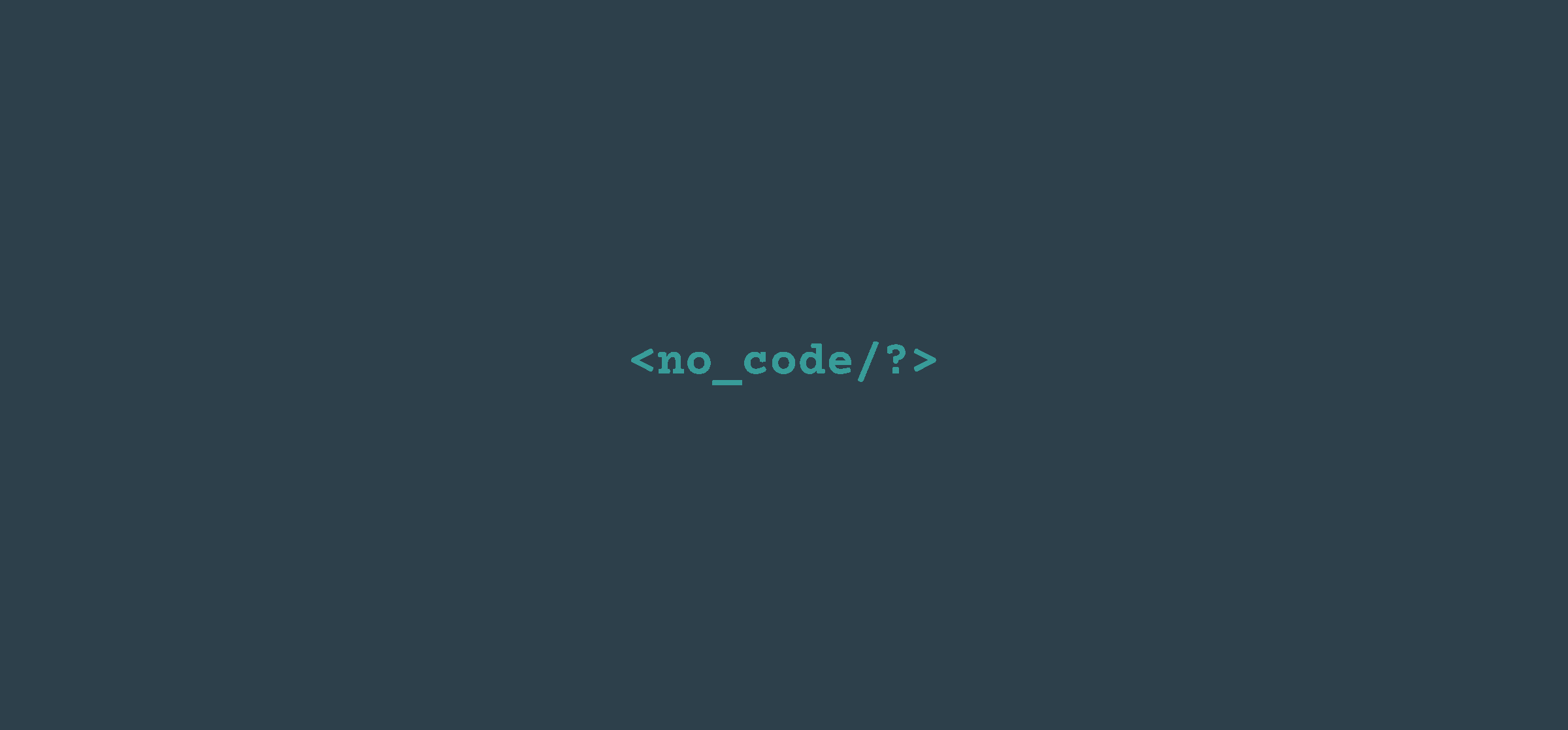Less Is More and None Is Better: Why No Code Development Is the Future
Coding is anything but simple. It’s an extremely specialized skill, and that’s why leaders are always on the hunt for expert developers. The problem is, these developers can be hard to find and are often overworked, resulting in bottlenecks and project delays.
So what if your team could create their own apps, customized specifically for their needs, without the help of a developer? Thanks to no code platforms, they can.
What is no code?
In an effort to remove some of the restrictions imposed by traditional programming languages, low-code development platforms were introduced around 2011. These platforms were inspired by visual programming languages (VPLs) that used boxes, arrows, and symbols to create logic paths rather than text. Low code systems allow developers of varying skill levels to create applications using a partially graphical user interface (GUI). Low code is simpler for people without technical backgrounds to understand, allowing them to contribute to software creation. But the process still requires hard-coding by an expert at some phase of the development process.
The next logical step from low code is an even greater leap forward: no code.
No code platforms are exactly what they sound like; platforms that allow the creation of applications without coding knowledge. Partly inspired by “what you see is what you get” (WYSIWYG) website building software like Adobe’s Dreamweaver, no code platforms use a graphical user interface instead of just a visual language. Users are able to drag-and-drop elements that perform tasks, employing simple logic to create apps quickly. With the code barrier removed, anyone with an amazing idea can create fully-functional applications.
How no code is shaping the future of work
Developers are amazing at the incredibly specific and technical work they do, so why do we even need no code platforms? The difficulty is that there usually aren’t enough developers for every project an organization has planned.
Using a no code platform lets businesses take the strain off their developers, reducing backlog clutter and expediting the development process. No code takes the once-cloistered realm of coding and democratizes it. Anyone with a great idea can build a prototype, a minimum viable product, or even a fully functioning app. The result is that the process costs less and incorporates direct input from stakeholders, removing the bottleneck that holds so many projects back.
No code development could not have shown up at a better time. Today, more people are working remotely, separated by greater distances, from different time zones. Cloud-based no code platforms help these far-flung, asynchronous coworkers build apps tailored to their organization’s unique needs. While in the past the only solutions available to companies were either off-the-shelf or custom in-house applications, a team using a no code platform can tailor fit an app to their specific requirements. So rather than having to take the elevator down to Sub-basement C to get a developer to help, Wendy in Seattle can build an app that will be ready to send to Doug in Glasgow by the time he sips his morning tea.
No code development also makes cross-functional teams more effective. Since no developer is required, these multi-talented squads can be more easily assembled to take advantage of unique skill sets and viewpoints, building on great ideas without the need for deep technical knowledge.
5 no code tools you should know
Though there are dozens of no code platforms, here are a few key products that show what no code can do for your organization.
Squarespace
Squarespace isn’t just well-known because they advertise on every, single, podcast. It’s also one of the premier platforms for building beautiful, functional websites. Working from a huge selection of templates, teams can create sites that can serve a range of needs. Squarespace offers e-commerce, diverse content modules, and seamless integrations with handy services around the web. All without having to code, meaning projects can go from brainstorm to public-facing in no time.
Notion
If you’re one of those people who has a million notes in a thousand different notebooks stored in a hundred locations, consider trying out Notion. Using a no code GUI, Notion helps users manage their knowledge, projects, and data. Using an easy-to-understand graphical environment, individuals and collaborative teams can create workflows that usually rely on a number of platforms, all in one place.
Substack
Need a subscription service for your content? Enter Substack, a no code development platform that can allow anyone to create a subscription service. Substack is based on an email newsletter system that lets you decide which content is free or paid, and handles payments, publishing, analytics, and more.
Airtable
For everyone who will never give up on their spreadsheets, Airtable takes the familiarity of a spreadsheet environment and expands its functionality. Instead of just numbers and text, Airtable lets you assemble all kinds of tools and processes to complete complex tasks quickly and simply, without having to write any code. Hard to believe no one came up with it sooner.
Unito
Is your organization using multiple tools to get things done? Get visibility back and keep teams aligned by managing your workflows with Unito. With a simple, no code workflow designer, you can map out your workflows and integrate your tools all in one place without bothering your developers. Empower anyone, no matter their skill set, to integrate their tools and shape the flow of work with Unito. Here are some of the most popular Unito integrations:
No Code, no problem
With the increasing availability of no code solutions, organizations everywhere are becoming more flexible, adaptable, and agile. The rapidly changing business world demands it. From the explosive growth of podcasts to the proliferation of captivating content campaigns, teams are creating tailormade solutions in-house, without needing to spend the time, money, and resources on experts. So just one question remains. How will your team use no code to achieve more with less?


